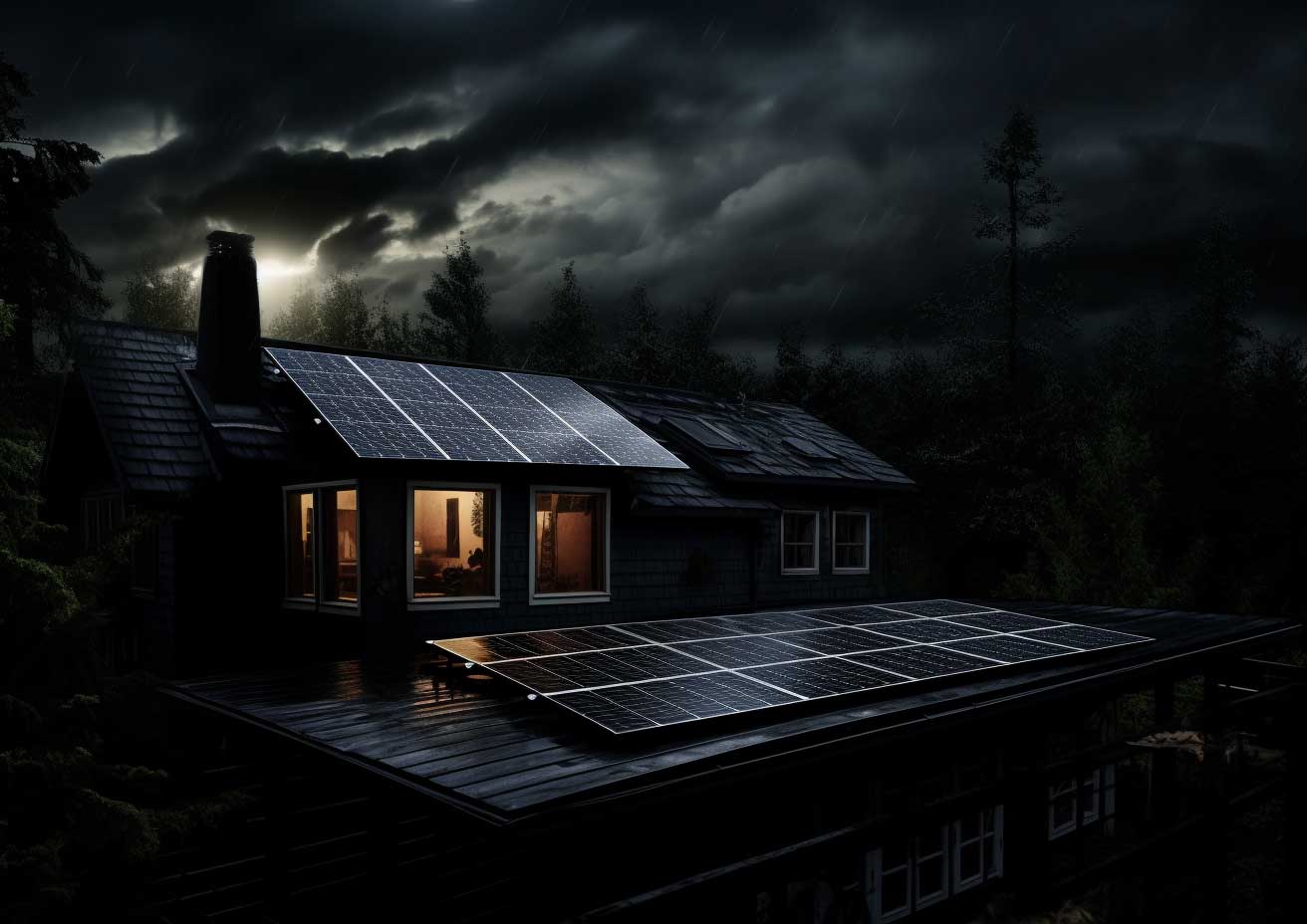As utility bills surge and the impact of energy consumption on the planet looms large, the demand for sustainable and cost-effective lighting options has never been more urgent. This comprehensive guide dives into the heart of this dilemma, unraveling the mysteries behind the lifespan of LED lights and their pivotal role in reshaping the landscape of modern illumination.
As you navigate through bustling commercial spaces or retreat into the comfort of your own home, the impact of LED lighting becomes irreplaceable. Imagine the possibilities if you contribute to energy efficiency without compromising the brightness and ambiance of your space. Picture the reassurance of knowing that your lighting solution is not only durable but also environmentally friendly. The journey into leaving the traditional light bulbs unveils a pathway where cost-efficiency converges with sustainability, presenting a beacon of hope for businesses striving to cut down operational costs and homeowners seeking to foster a greener and more energy-conscious lifestyle.
Do LED Lights Last Long?
LED, short for “Light Emitting Diode,” represents a groundbreaking lighting technology that harnesses the power of semiconductors to efficiently convert electricity into luminous output. Unlike its traditional counterparts, such as incandescent and fluorescent bulbs, LED lightbulbs lack filaments or gases. Instead, they rely on tiny diodes to generate light when an electric current flows through them. This unique design contributes to their exceptional energy efficiency, enabling them to produce a higher light output while consuming minimal energy.
Understanding the average lifespan of LED lights is paramount in maximizing your investment and curbing long-term energy expenses. Unlike conventional lighting options that frequently necessitate bulb replacements due to burnouts, LED lights boast an impressively prolonged lifespan. In residential environments, LED lights typically endure for approximately 50,000 hours, while in bustling commercial spaces, their lifespan can extend beyond 100,000 hours, surpassing the longevity of traditional bulbs by a substantial margin. This extended durability not only translates into cost savings but also underscores the reliability and sustainability that LED lights bring to both residential and commercial settings.
Factors Affecting LED Lifespan
Quality of the LED
The lifespan of an LED is heavily influenced by the quality of the LED chip, driver, and fixture. Superior quality LEDs are equipped with high-grade materials and boast advanced manufacturing processes, ensuring enhanced performance and longevity. A top-notch LED chip paired with an efficient driver and heat sink can effectively manage heat, a crucial factor since excessive heat can deteriorate the light-emitting diode over time. Rigorous testing and quality control are integral to delivering LEDs that promise extended lifespans, making them a wise choice for integrated LED fixtures, LED strip lights, and other lighting specifications.
Usage Patterns and Duty Cycle
The duty cycle, which reflects the ratio of time an LED is on compared to off, can greatly affect its lifespan. LEDs subjected to continuous operation without breaks can undergo higher thermal stress, shortening their lifespan. Conversely, using LEDs with intermittent cycles and ensuring they operate in environments with cooler ambient temperatures can enhance their longevity. Additionally, LED lights that frequently turn on and off may suffer from wear and tear on internal components, such as the LED driver, which can impact their lifespan.
Environmental Conditions
Environmental factors like excessive heat, humidity, and exposure to dust or moisture are critical to the lifespan of LED lighting. High temperatures, for instance, can speed up the degradation of LED components, reducing lifespan, while high humidity or moisture can cause corrosion, damaging the LED driver and other internal components. Ensuring that LEDs are used in conditions appropriate for their design, such as avoiding enclosed fixtures that can trap heat or ensuring proper use of LED strip lights and long LED lights, can mitigate these risks.
Heat Management
Effective heat management is paramount for LED lifespan. The design of the LED lamp, including the heat sink, plays a vital role in dissipating heat away from the LED chip. When heat is not managed properly, it can lead to excessive heat build-up, negatively affecting the light output and causing a decline in the efficiency of the LED strip light or bulb. Installing LEDs in light fixtures designed with proper heat dissipation in mind, such as those with heat sinks, can extend the life of the LEDs.
Electrical and Mechanical Stress
LEDs are sensitive to both electrical and mechanical stress. Fluctuations in power supply can cause stress on the LED chip, leading to a reduced lifespan. Similarly, physical impacts or vibrations can damage the delicate components of an LED bulb or lamp, particularly in high bay light applications or when LED strip lights are not installed securely. Ensuring a stable power supply and proper installation can help mitigate these types of stress, preserving the longevity of LED lighting solutions.
Benefits of Longer Lifespan for LED Lighting
Cost Savings
The extended lifespan of LED lights represents significant cost savings, primarily due to their impressive longevity which outshines traditional bulbs. An LED light bulb can last up to 50,000 hours or more, which is around 50 times longer than traditional incandescent bulbs and 10 times that of fluorescent bulbs. For large commercial spaces and residential homes alike, the durability of this light fixture means fewer replacements, reduce lamp maintenance, and more money saved over time
Energy Efficiency and Environmental Impact
LED lighting is not only long-lasting but also highly energy-efficient. They require less power supply to produce the same amount of light as traditional lighting sources, which leads to lower energy consumption and, subsequently, a reduction in electricity bills. This efficiency contributes to a smaller carbon footprint, as less energy usage translates into fewer greenhouse gas emissions. Therefore, by investing in LED lights, businesses and homeowners are not only saving money but also playing a part in environmental conservation.
Reliability and Consistency
A high-quality LED fixture with superior materials and advanced manufacturing techniques often has higher efficacy, producing more light per watt of electricity. This minimizes heat generation—a primary cause of wear and tear in lighting—and thus prolongs the lifespan of the LED. Such reliable performance is essential for commercial and residential settings where consistent light output is crucial.
Operating Conditions and Durability
An LED light fixture may be sturdy, but its longevity is influenced by operating conditions such as the duty cycle, temperature, and humidity. Properly installed LED lighting in environments with suitable temperatures and humidity levels can last upwards of 100,000 hours. However, excessive heat can accelerate component degradation, while excessive humidity can lead to corrosion of the electronic parts. Hence, ensuring the right operating conditions can significantly extend the average lifespan of LED lights.
Lumen Maintenance
Unlike traditional bulbs that fail abruptly, LEDs experience lumen depreciation, a gradual reduction in light output. The longevity of LEDs means that they retain their brightness for much longer periods. This consistent light output is crucial in settings where sufficient lighting is key, such as retail stores or manufacturing facilities. Choosing high-quality LEDs and ensuring proper heat management can minimize lumen depreciation, maintaining the light’s effectiveness over a longer period.
Tips for Extending the Lifespan of LED Lights
Proper Installation and Mounting
Ensuring that LED fixtures are installed correctly is vital to prevent physical damage and extend their lifespan. Following the manufacturer’s guidelines for mounting and wiring is essential. A meticulous installation process minimizes stress on the fixtures, thereby preventing damage and potential failures that can shorten the lifespan of the LED lights.
Use of Lighting Controls and Dimming
By allowing users to adjust brightness as needed, LEDs are not constantly running at full capacity, which reduces wear and tear. Advanced control systems can adapt lighting based on occupancy or the time of day, further adding to the efficiency and longevity of the LED fixtures. This level of control can not only save energy but also reduce the heat load on the LEDs, contributing to a longer lifespan.
Maintaining Stable Operating Temperatures
Temperature stability is crucial for the optimal function of LED lights. Ensuring proper heat dissipation through heat sinks or adequate ventilation is necessary to prevent overheating, a common cause of reduced LED lifespan. Conversely, protecting LEDs from extreme cold is important to prevent startup issues and flickering. Maintaining a consistent temperature environment safeguards the longevity of LED technology, ensuring that the lights remain functional and efficient for as long as possible.
Outdoor LED Maintenance
Outdoor LED fixtures require additional maintenance due to their exposure to the elements. Implementing surge protection is crucial to protect the fixtures from electrical surges during storms, which can be damaging. Moreover, sealing and waterproofing measures such IP65 / IP66 are imperative to protect outdoor LEDs from water and dust.
Regular Cleaning and Inspection
Routine cleaning and inspection are essential maintenance practices that can extend the lifespan of LED fixtures. Dust and dirt accumulation on LED lenses and diffusers can diminish brightness and efficiency. Regular inspections can identify loose connections and damaged parts early, preventing more significant issues. Ensuring that LEDs are kept clean and in good repair not only maintains light quality but also prevents failures that could shorten their operational life.
How Long Do LEDs Last?
Imagine the ease, the peace of mind that comes from knowing that the soft glow from your LED strip lights or the robust shine of your high bay lights will endure, not just for months, but for years. It’s not just lighting – it’s the assurance of continuous, reliable service that brightens your space without the nagging thought of replacement costs and the hassle of frequent maintenance.
In a world where every watt counts, where every lumen is a testament to sustainability, the shift to LED technology is more than an upgrade—it’s a smart choice for the conscientious consumer. And when it’s time to make that switch, WattLogic is there to illuminate the path. With expertise in LED installation and maintenance, WattLogic offers the support you need to navigate the world of LED lighting, ensuring that the transition is as seamless as the light from your new, energy-efficient LEDs.
Let WattLogic be the partner that helps you step confidently into a brighter, more sustainable future. Contact us today!
Frequently Asked Questions (FAQ)
How long do LED strip lights last?
LED strip lights have an impressive lifespan and can last up to 50,000 hours on average. However, it’s important to note that the lifespan of LEDs can vary depending on the manufacturing quality and usage. Proper maintenance can also significantly prolong the lifespan of LED strip lights. By ensuring that you take good care of your lights, you can expect to enjoy approximately six years of continuous use.
How long do LED light bulbs last?
LED light bulbs are known for their extended lifespan, providing a significant advantage over traditional incandescent bulbs. While incandescent bulbs can last around 1,000 hours, the most durable LED light bulbs have been tested to last up to 100,000 hours, which is impressive. On average, LED bulbs can last for at least 20 years before needing to be replaced, making them a cost-effective and eco-friendly lighting option.
Can LED lights be left on 24/7?
High-quality LED lights can be left on 24/7 without any issues. However, cheaper and poorly-manufactured LED lights may not be able to withstand constant usage. It’s important to choose LED lights from a trusted source to ensure their quality and longevity. Additionally, since LEDs produce minimal heat, they are not a significant fire hazard like traditional lighting technology. As such, you can leave them on for extended periods without worrying about the risks of overheating.
Do LED lights attract bugs?
LED lights attract fewer bugs than traditional lighting sources because they produce minimal heat and do not emit UV light. Insects are generally attracted to lights that emit heat or have specific colors within the visible light spectrum. Since LED lights do not emit these colors and generate little heat, they tend to attract fewer insects. However, it’s important to note that some insects may still be attracted to outdoor LED lights, particularly if they’re installed near standing water or in areas with high insect populations.
Why do LED lights stop working?
LED lights can stop working due to a variety of reasons. These may include a faulty power supply, loose connections, or even damage caused by water ingress due to rain. It’s important to identify the root cause of the issue to determine the appropriate solution. Some common signs that your LED lights may not be working include flickering, dimming, or complete failure to light up. However, in most cases, these issues can be resolved through proper troubleshooting and repairs.




